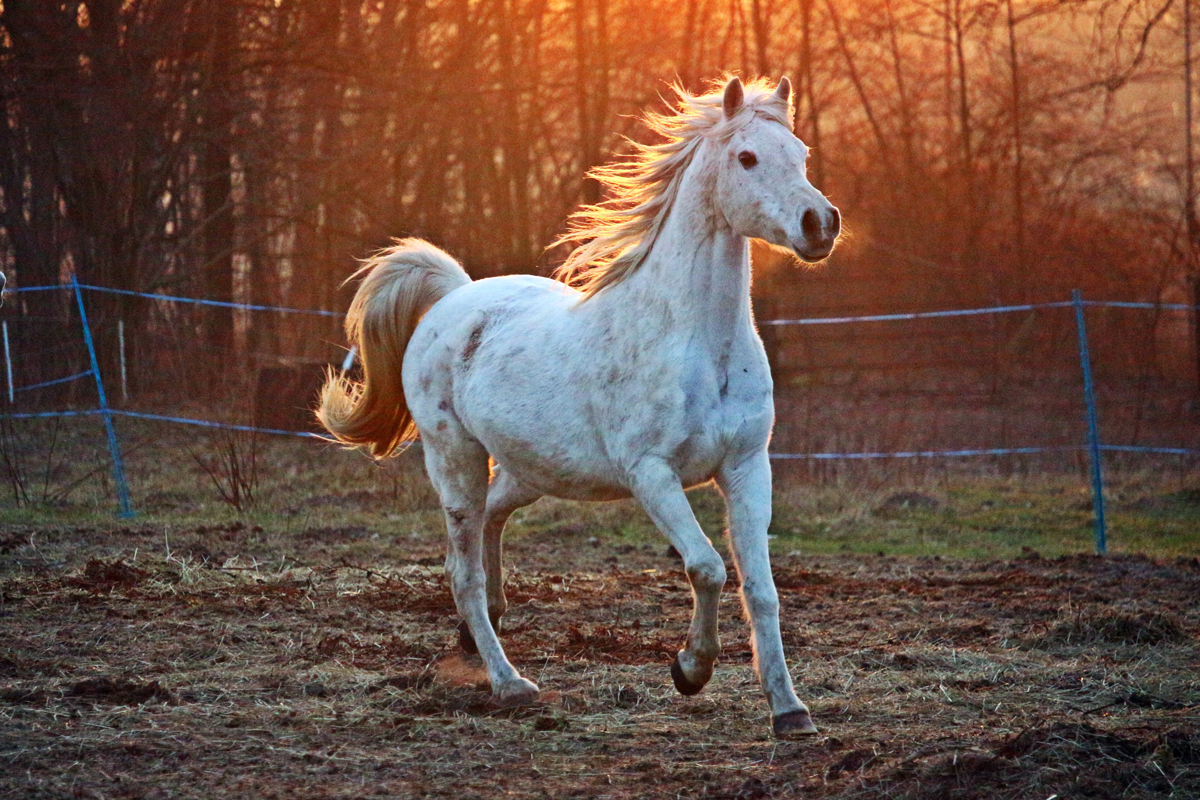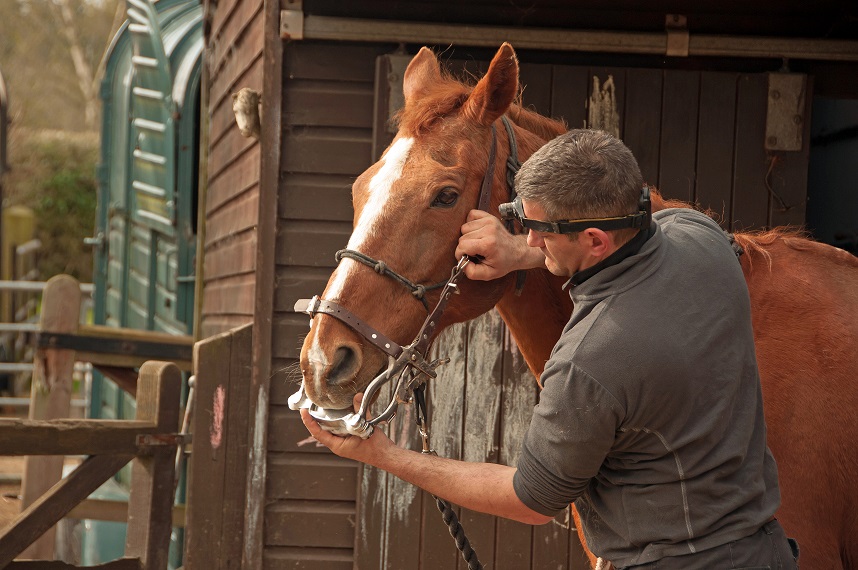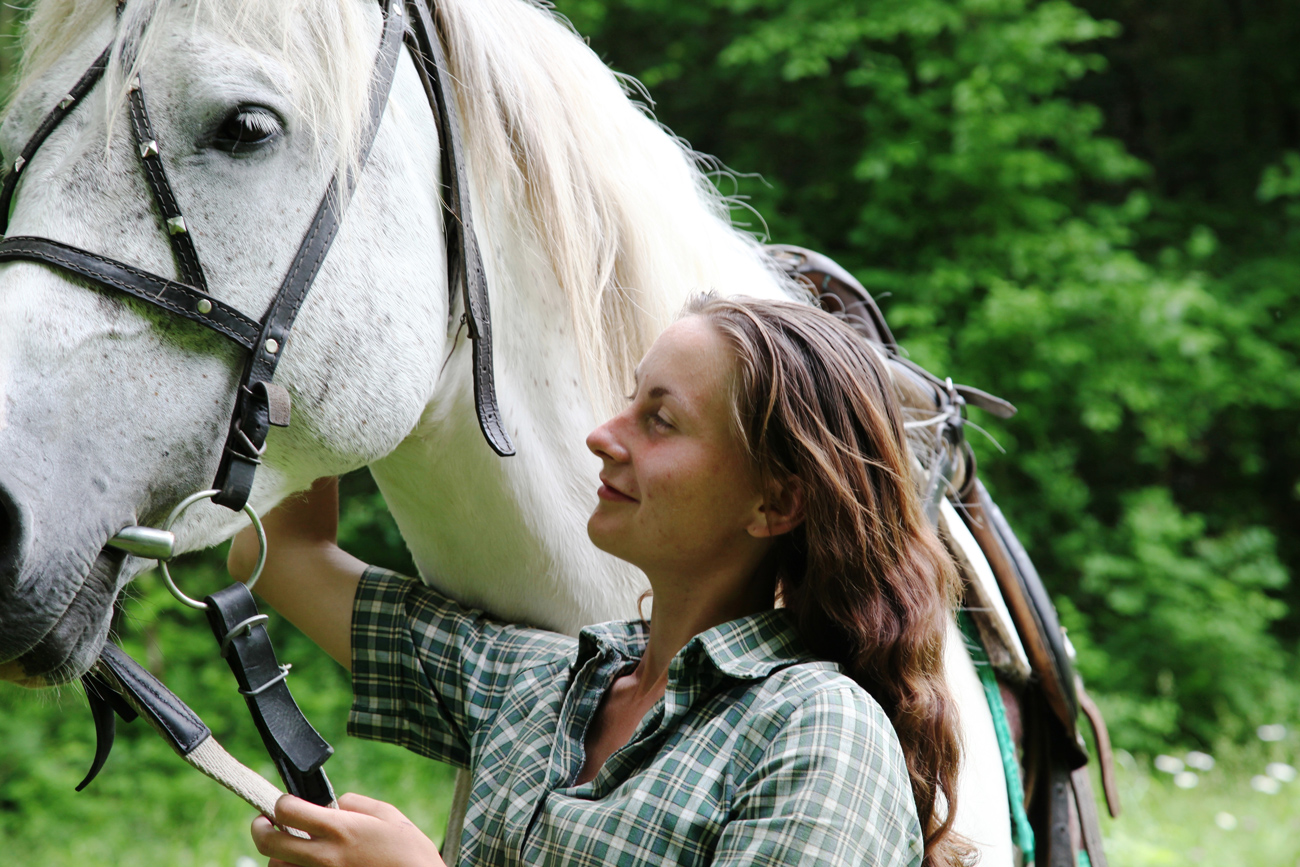Riding a spooky horse is far from fun for even the most experienced of riders. If your horse spooks it can catch you completely off guard and leave you feeling nervous or anxious in the saddle. So, training a spooky horse is well worth the effort. Read our guide to training these sensitive creatures and put fear behind you both.
Remember even the calmest of horses could spook at one time or another. It could be a small shy away from something or a much stronger reaction putting you both in danger.
As we know, there’s no one-size-fits-all approach when it comes to our equine friends. All horses react differently when spooked – some might hate hacking near livestock while others might have problems with travelling in small, confined spaces.
If your equine is particularly jumpy when it comes to travel, make sure you have adequate insurance for horseboxes in place. The comprehensive policies available through Equesure can cover you for horsebox damage caused by your horse.
What is a spooky horse?
If you ask many horse owners about what a spooky horse means for them, there’s no doubt it’ll usually be associated with ‘bad’ or undesirable behaviour. A horse that spooks can easily throw you off, or knock you or someone else down. For beginners, a spooky horse could completely erode riding confidence.
However, spooking is completely understandable and natural when we consider horses are prey animals. If a horse doesn’t understand something or is unsure then its flight-or-fight response will usually kick in and they will make a startled jump or a quick change of direction. Such reactions towards a potential predator could easily save their life in the wild.
A spooked horse will usually try to run away to escape from the perceived threat. However, if they feel cornered then they might resort to their other option – fighting. So they might start kicking, striking, biting, rearing and bucking.
More often than not, spooking is the result of a horse being genuinely frightened rather than because they’re badly behaved. Depending on the horse a new, unfamiliar object, a sudden noise or movement can all be grounds for spooking.
It’s also worth remembering some horses are simply more high energy than others and may spook to burn off steam. Other common causes include discomfort from a badly fitting saddle or a girth that’s too tight or restrictive.
Spooking can also be a sign of physical pain or vision problems. While some horses are simply more anxious than others. Like their human owners, horses can be complicated creatures!

How do horses react when they’re spooked?
As already mentioned, spooky horses react in a variety of different ways depending on how much threat they feel. While all horses will act differently common things you might notice are:
- Spinning
- Bucking
- Rearing
- Bolting
- Quickly changing direction
- Jumping sideways
- Reversing
- Freezing on the spot
As we all know by now, horses can be very sensitive to change, new environments and unfamiliar situations.
It could be something as simple as new poles laid out on the floor of their arena. Or a passing tractor or person holding an umbrella. You might not even be able to perceive yourself what the cause is!
It could even be their legendary supernatural sixth sense in action!
What is the aim of training a spooky horse?
No matter how well connected you are to your equine friend, if they suddenly spook it can be tricky to know quite what to do. We all know our horses can sense our emotions and will often react to our anxiety.
However, even the most experienced of riders can find it hard to keep their fear and insecurities under control if their horse begins to spook. By training your horse you’ll be more likely to stay balanced and secure when riding.
Your horse will be more relaxed, focussed and will more likely look to you for guidance when unexpected problems occur.
How to train a spooky horse
While it’s always better to deal with spooky behaviour sooner rather than later, it’s never too late to start training. Any work you do towards reducing the amount or intensity of spooking will leave you feeling more confident, less nervous and more prepared.
However, before attempting any training your priority must be that you both stay safe. Horses are beautiful but powerful creatures and can be dangerous.
If such training is done incorrectly then you could end up making your horse even more fearful. Serious injury to you or your horse then becomes more likely.
Just as with finding the best horsebox insurance, it’s always wise to seek specialist help and support at an early stage. Particularly if you’re struggling to cope with your horse’s spooky behaviour some extra support can make all the difference.
Let’s take a closer look at some of the ways you can manage a spooky horse and keep yourself cool when challenges arise.
Rule out health problems
Just as you wouldn’t transport your horse without having horsebox insurance, so you wouldn’t ride your horse without checking their health first. Spooky behaviour can easily be caused by pain. So, if your normally dependable horse suddenly starts behaving out of character, then check the following:
- Teeth - could a dental problem be causing your horse to reject their bit?
- Eyesight - failing eyesight can make horses nervous of new shapes.
- Bridle - is this too tight and causing discomfort?
- Joints and muscles - are there any signs of soreness and pain?
- Injury or lameness - has your horse picked up an injury while out on a ride?
- Foot quality and balance - are there any signs of uneven wear or discomfort?
There could well be a simple fix, and horse insurance will cover your costs if medical treatment is required.

Get secure in the saddle
Developing your balance or security in the saddle is an important way to ensure that whatever happens you won’t be unseated. When a horse spooks it can often catch a rider off guard.
Without meaning to, your horse could easily dump you. By working on your balanced and secure seat you’ll be more positive, effective and proactive in the saddle.
This may take some time and it could be worth getting a professional to give you some pointers in the arena before heading out on a hack alone.
Ride positively and proactively
Another tip that’s as much about you as it is about the horse. Always ride positively forwards while sitting tall with your shoulders back, head up, leg on and quiet hands. This can put a stop to a spook before it happens. Remember, you need to be the leader for a spooky horse, not just a passenger!
Keep them focused
The more a horse is listening to you from the outset the less likely they are to become disinterested and unfocussed.
When a horse isn’t focused on you, they’ll find something else to concentrate on – and if it’s a bit scary this can lead to a spook.
Your horse will have far less to worry about if they’re tuned in to you alone. Whether you’re in the arena or out on a hack, always have a few different things you want to work on together. Not only will it distract them but it’ll also work wonders for your ride.
Plan ahead
As we said, having a training plan can allow both you and your horse to stay focussed and confident.
Always begin with a targeted, structured warm-up, include a handful of schooling exercises and a proper cool-down at the end.
Developing your ability to control your horse’s shoulders is time well spent. By riding shoulder-in past any unfamiliar objects, your horse’s focus will move away from the spooky object, and back on to you.
Add in variation to keep engagement high
If you want to enjoy safe and happy hacking with your horse then you need to get away from doing the same things day after day.
In the arena try adding plenty of transitions, changes of rein, sequences of movements, and polework. Follow some of our 20 top tips for hacking out in the country and reinvigorate your time together.
Adapt your training to your horse
We all know that one rule does not fit all horses. Sometimes you’ll come across a horse who is just genuinely frightened of a particular object, place or situation.
By keeping a record of your horse’s behaviour and situations or events leading to it you might become aware of a specific spooking trigger. When you know this you and your horse will be able to work on adapting your training to meet this challenge.
For example, if there’s a particular spooky corner your horse has taken a dislike to then lead up to it progressively over time. Staying patient and taking baby steps is usually the best route to success.
Remember to praise and reward your horse
If you want to develop a positive attitude and behaviour in your horse then praise and reward should be your go-to options.
Never ignore good behaviour from any horse. Whether it’s just a simple pat on the neck or verbal praise, it’s important to show your equine they’ve done a great job.
When training your spooky horse, it’s all too easy to get frustrated or cross. But you’re only going to make matters worse if you do. Instead, look for any opportunity to give them a kind word and a stroke – it will help you to relax, too!

Keep a cool head
Be careful not to punish your horse for being spooky. It never helps. We know this is easier said than done, but keeping cool and calm if your horse does spook is the best way to stop matters from getting out of hand. Keeping cool, calm and confident whatever the situation will do wonders for your spooky horse.
Use your legs
Nervous horses need to be controlled by your legs as well as the reins. By teaching your horse to respond to leg aids you should be more able to control their reactions if they do have a fright.
Desensitisation can be a great tool, if used correctly
Helping your horse feel comfortable around a variety of situations, sounds and objects is a good way to reduce spooky behaviour. By introducing spooky things over time, you and your horse will build confidence in each other and keep building positive experiences.
How to load a spooky horse into a horsebox
If you think about it, asking your equine to walk into a raised black box on wheels is a pretty scary prospect! If your horse has had problems loading in the past, the team at equine website Your Horse has some great advice.
They suggest you should park the horsebox facing their stable or field mates so they’re walking towards something familiar.
You should also make sure the ramp is on a flat, level surface so it’s not wobbly when they start to walk in. Read more top tips on how to load a spooky horse on their website now.
Find specialist horsebox insurance at Equesure today
Whether you’re happiest with a 3.5 tonne horsebox or prefer something a lot larger, the helpful team of insurance specialists at Equesure can help you find the right cover for your needs and budget.
Our team has over 60 years of experience in the horsebox insurance market, finding cover for models by the likes of Equi-Trek, Tristar, Ascot, Empire, Ifor Williams, Alexanders and many more.
Obtaining insurance through Equesure can give you a range of benefits including breakdown cover, so you don’t need to worry about your horsebox breaking down and getting stranded far from home.
Other benefits can also include:
- Comprehensive and third party, fire and theft
- Cover for social, domestic and leisure
- Limited mileage discounts
- Windscreen cover on comprehensive policies
- Personal accident cover on comprehensive policies
- Values up to £750,000
- Legal cover available with all policies
Getting a horsebox insurance quote is simple with Equesure.
Policy benefits, features and discounts offered may very between insurance schemes or cover selected and are subject to underwriting criteria. Information contained within this article is accurate at the time of publishing but may be subject to change.






